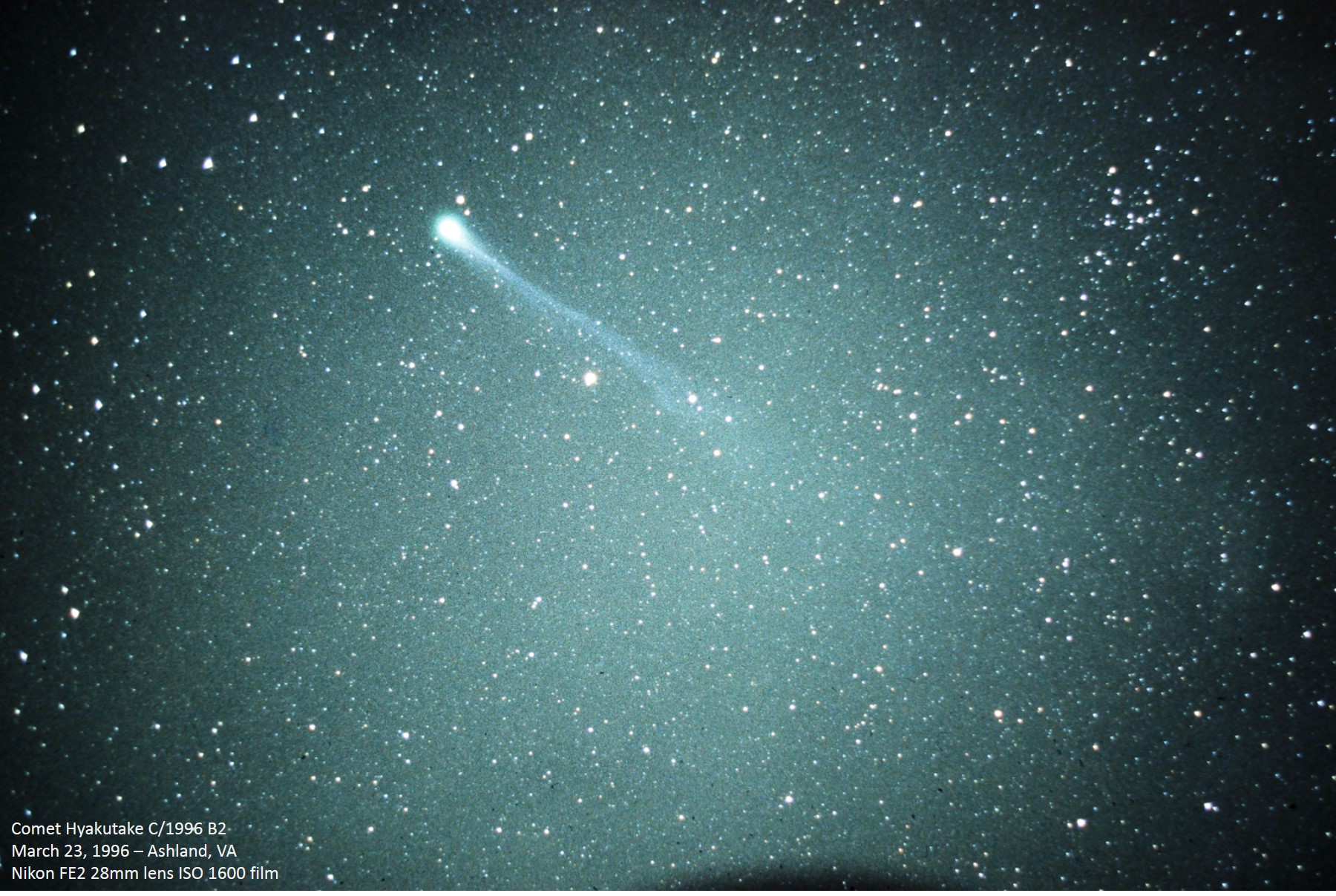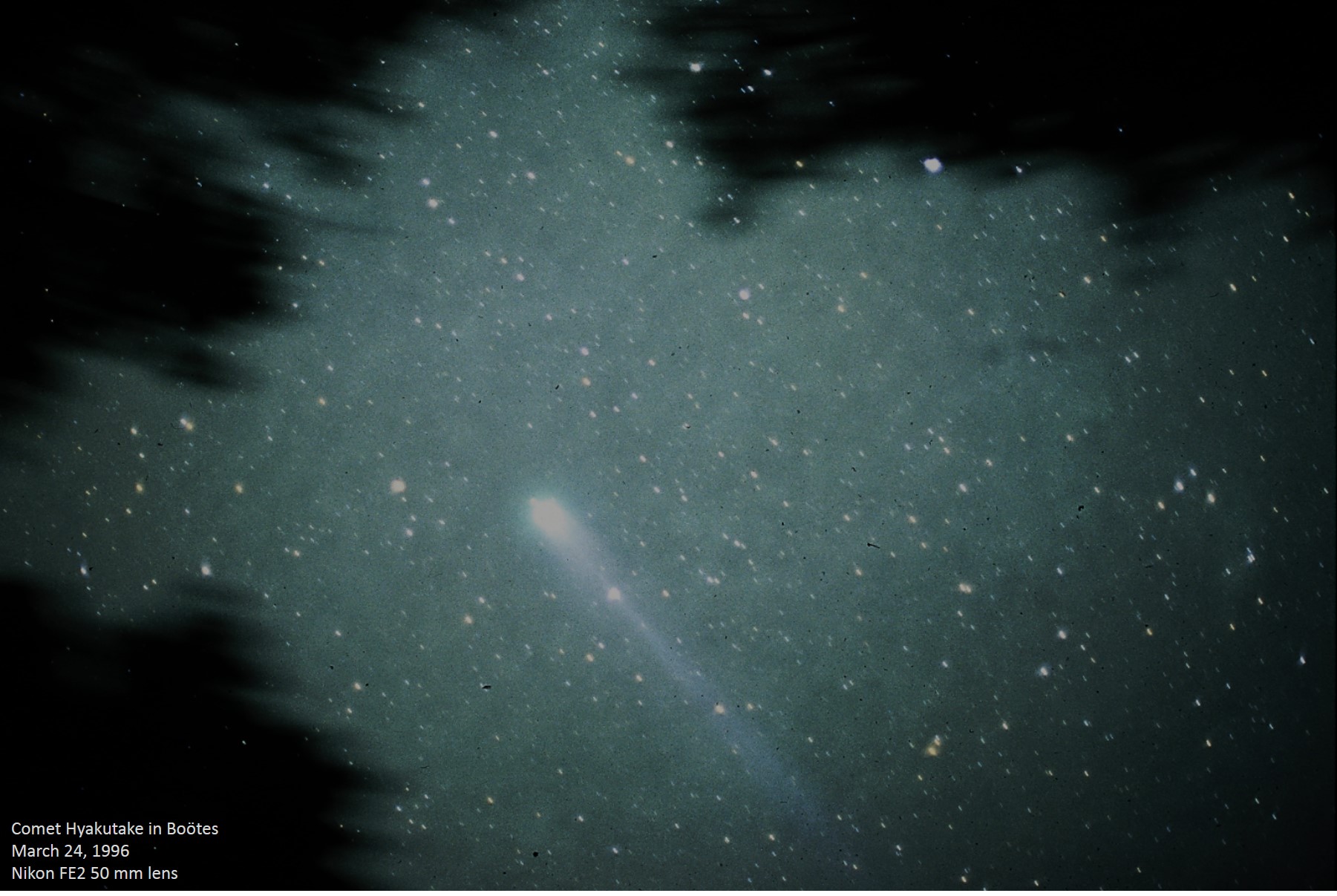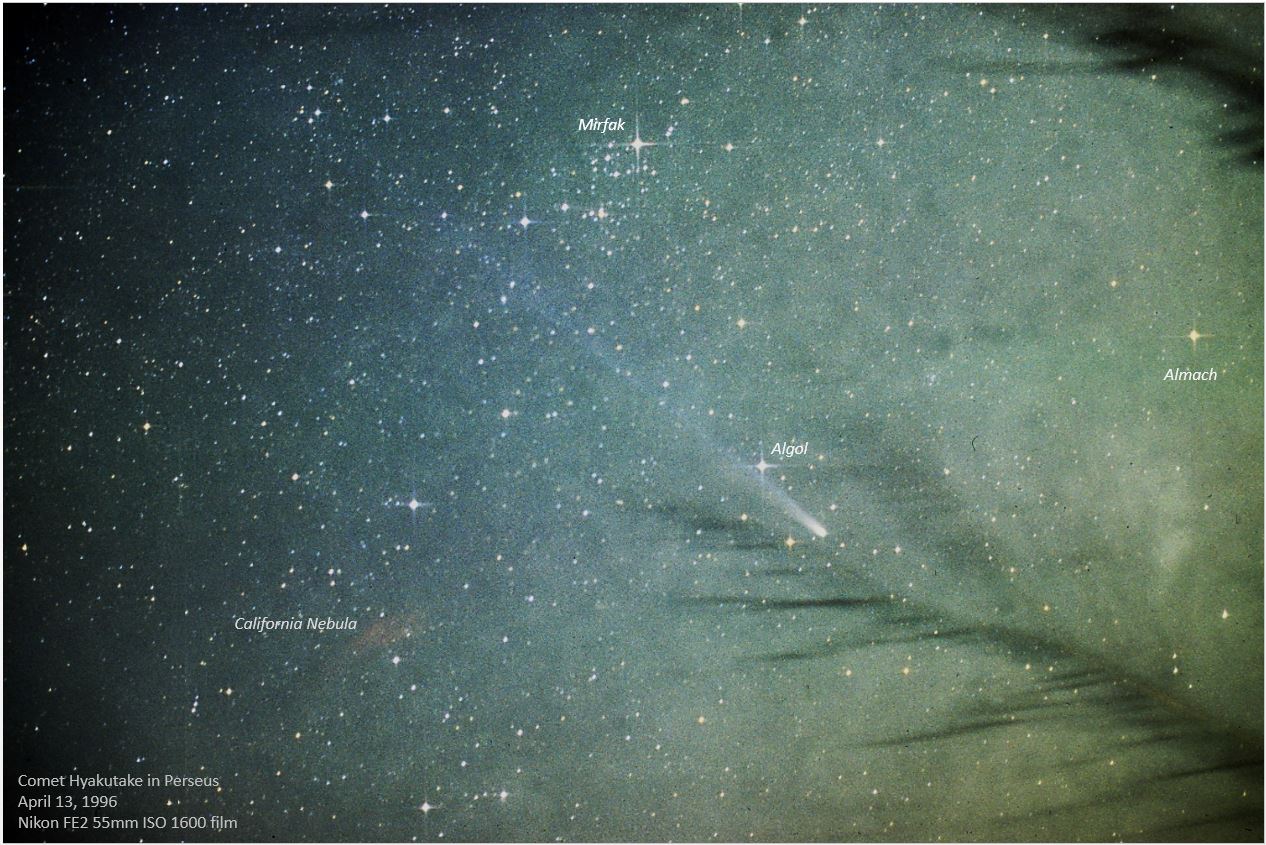Comet Hyakutake in 1996
Comet Hyakutake
C/1996 B2) was discovered in January 1996 and in very short order became a
spectacular sight in the northern sky, rapidly moving through the constellations
of Boötes, Ursa Major and Ursa Minor before sinking down to the western
sunset sky in Perseus. My pictures below were all obtained in the March-April
1996 from several locations in central Virginia, either near Fredericksburg
or from Hanover County west of Ashland.
The comet was marked by a very long, narrow dust and gas tail that didn't seem
to separate as many comets' tails do, so that the impression of its very fast
actual motion through space was accentuated by the visual effect of the tail.
The spectacular nature of this comet was a combination of its great
brightness and the fact that (at least for us in the northern hemisphere) it
was visible high in the sky in the middle of the night. Many comets,
including Halley, are brightest and most impressive when low on the horizon
in twilight, but that was not the case here. This diagram of the comet's
orbit shows how it passed almost directly above (north of) the Earth at the
very same time it was closest to us. A better
example of an amateur photo of the comet, taken on March 25, 1996, also
shows the same "kink" in its tail that is sort of visible on my pictures.
I can't determine the date of this
image by Fred Espenak, but it also highlights the long, straight tail.



March 23, 1996
March 24, 1996
April 13, 1996